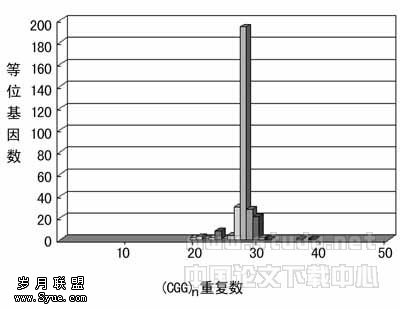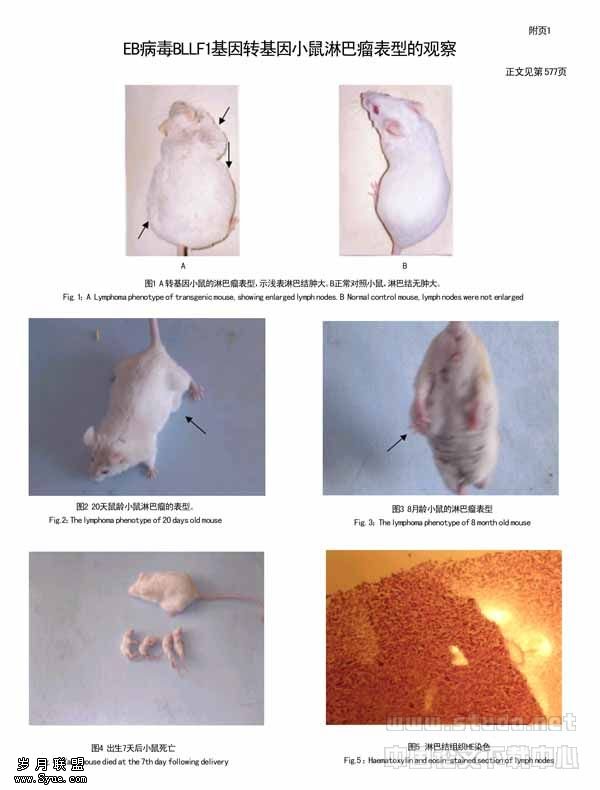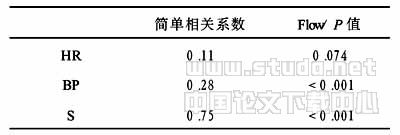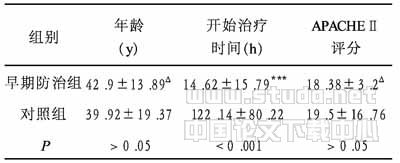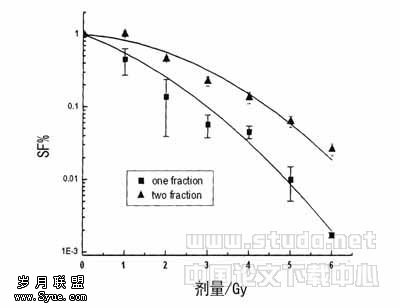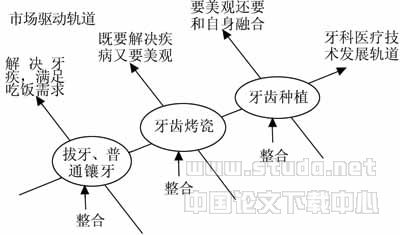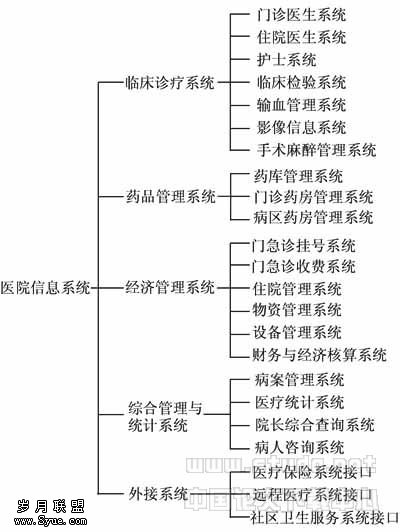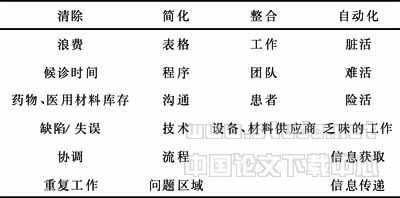白介素12降低白血病和骨髓增生异常综合征患者外周血单个核细胞WT1基因的表达
作者:潘崚,张学军,牛志云,索晓惠,张敬宇,杨琳,
刘小军,乔淑凯,董作仁,大野龙三
【摘要】 有研究证实,白细胞介素12(IL-12)可以增强杀伤细胞的细胞毒性,还可以促进细胞毒T细胞对原代白血病细胞及白血病细胞株的细胞毒反应。此外,Wilms癌基因WT1 mRNA作为微小残留病变的标志已被广泛用于监测急性白血病(AL)和骨髓增生异常综合征(MDS)的疗效。为了研究IL-12能否降低AL和MDS患者外周血单个核细胞WT1基因的表达,分别收集了30例恶性血液病患者和5例健康志愿者的外周血单个核细胞(PBMNC)进行体外培养,在培养体系中加入IL-12。培养前和培养后第3天,用竞争性RT-PCR方法分别测定各标本中WT1 mRNA的表达量。结果显示,在6例慢性粒细胞性白血病患者,WT1 mRNA由104.8 降至104.2拷贝/微克总RNA;在12例MDS患者,WT1 mRNA由105.4降至104.8拷贝/微克总RNA;在5例完全缓解期AL患者,WT1 mRNA由105.0降至104.2拷贝/微克总RNA;但在7例未缓解的AL患者,WT1 mRNA的表达无变化。结论: IL-12可以显著降低大部分恶性血液病患者WT1 mRNA的表达水平,IL-12有望用于去除恶性血液病患者体内的微小残留病变。
【关键词】 白血病
Interleukin-12 (IL-12) is a heterodimeric cytokine produced by monocytes,B lymphocytes and other antigen-presenting cells under physiological conditions[1,2]. The names were initially given for the natural killer (NK) cell stimulatory factor or cytotoxic lymphocyte maturation factor based on its stimulatory effects on these cytotoxic lymphocyte populations. In vitro studies have demonstrated that IL-12 can enhance the non-MHC-restricted cytotoxic activity of NK cells[3] and facilitate specific allogeneic human cytotoxic T lymphocyte responses against primary leukemia cells and cell lines[4-6] . IL-12 can potently induce IFN-γ[7,8],and up-regulate the expression of cytotoxic components including perforin,serine esterase and TIA-1 in peripheral blood lymphocytes[9]. IL-12 can also stimulate continuous proliferation of both T lymphocytes and NK cells[10].
IL-12 has also been shown to have potent antitumor activities in murine tumor models,including B16F10 melanoma,renal cell adenocarcinoma,M5076 reticulum cell sarcoma,RAW117-H10 lymphoma and fibrosacoma[11-14]. In the RAW117-H10 lymphoma model,IL-12 showed a significant antitumor effect against metastatic lymphoma in the liver of lymphoma-bearing mice that had been treated with high-dose chemotherapy followed by stem cell transplantation,a situation which mimics clinical minimal residual disease (MRD)[13]. Subcutaneous administration of IL-12 also showed promising antitumor effects in patients with cutaneous T-cell lymphoma[15] and metastatic renal cell carcinoma[16-18]. These data suggest that IL-12 may be useful in the therapy of patients with hematological malignancies.
The Wilms’ tumor gene,WT1,is a tumor suppressor gene located at chromosome 11p13. This gene is involved in growth control and differentiation of various types of cells. The expression of WT1 gene is reportedly restricted to selective tissues,including Sertoli cells,decidua cells of the uterus,and mesothelial cells. Recent studies,however,showed that almost all human leukemia samples examined expressed WT1 mRNA,regardless of the disease subtype[19-21]. WT1 gene expression in leukemia cells is approximately 105 times higher than in normal peripheral blood (PB) cells[19] and is inversely correlated with the prognosis of acute leukemia and MDS[22-24]. Suppression of WT1 gene expression by WT1 antisense oligonucleotide inhibited proliferation of leukemia cells[25],implicating the involvement of WT1 in leukemogenesis. These findings suggested that WT1 mRNA could be used as a new marker of MRD in patients with leukemia or MDS. Meanwhile,it was also found that the detection sensitivity of MRD by monitoring WT1 in PB is more than 100 times higher than in bone marrow (BM) because of the presence of WT1-expressing CD34+ cells in BM[19].
The present study was thus designed to investigate the effect of IL-12 on WT1 gene expression in peripheral blood mononuclear cells (PBMNC) from patients with leukemia or MDS to see whether IL-12 could be usable in the elimination of MRD in these patients.
Materials and Methods
Reagents
A recombinant human IL-12 (Hoffmann-La Roche Inc.,New Jersey) with a specific activity of 2.7×108 units/mg,was dissolved in culture medium RPMI 1640 (Gibco) supplemented with 1% penicillin and streptomycin,1 mmol/L L-glutamine and 10% heat-inactivated fetal bovine serum (Gibco) to yield a 100 units/ml working solution.
Patients and healthy volunteers
Heparinized peripheral blood was obtained after informed consent from 5 healthy volunteers,12 patients with MDS [3 cases of refractory anemia (RA),8 cases of RA with excess of blasts (RAEB) and 1 case of chronic myelomonocytic leukemia (CMML)]; 12 patients with acute myeloid leukemia (AML) [2 cases of M1,5 cases of M2,3 cases of M3,1 case of M4 and 1 case of M7 according to the French-American-British classification,5 patients in complete remission (CR),7 in non-CR]; and 6 patients with chronic myeloid leukemia in chronic phase (CML). Patients’ profiles are summarized in Table. Their peripheral blood contained 0 to 94% of blasts. PBMNC were isolated by density-gradient centrifugation with Ficoll-Paque (Pharmacia Biotech,Upsala,Sweden) and cultured at a density of 5×105 cells/ml of culture medium parallel with or without 100 units of IL-12 at 37℃ in a humidified atmosphere containing 5% CO2 for 3 days,since our preliminary experiment showed that the optimal activation time for PBMNC cytotoxicity by IL-12 was 3 days,and the optimal concentration of IL-12 was 100 units/ml (data not shown). Then,the following procedures were performed.Table. Patients’ characteristics in general (略)
Competitive RT-PCR analysis of WT1 mRNA in K562 cells and PBMNC
A human erythroleukemia cell line K562,a well-known constitutive WT1 gene-expressing cell line[19],was obtained from Japanese Cancer Research Bank and used in the present study. Extraction of total RNA was performed from about (5-10)×106 cells of K562 or PBMNC using TRI reagent (Molecular Research Center,Inc. USA) according to the manufacturer’s instructions. Extracted total RNA was dissolved in diethylpyrocarbonate-treated water (DEPC-water) and qu- antitated,and then competitive reverse transcription polymerase chain reaction (RT-PCR) was performed. Briefly,equal amounts (1 μg each) of total RNA from each sample were dissolved in DEPC-water (5 μl each) and mixed with 10 μl of 107,106,105,104,103,and 0 copies of competitor RNA (SRL,Tokyo,Japan),respectively. The mixtures were heated at 68℃ for 10 minutes and then mixed with 15 μl of RT buffer [(50 mmol/L Tris-HCl (pH 8.3),70 mmol/L KCl,3 mmol/L MgCl2,10 mmol/L dithiothreitol)] containing 400 units of Moloney murine leukemia virus reverse transcriptase (Gibco-BRL),200 mmol/L of each deoxyribonucleotide (dNTP,Roche Molecular Systems,Inc,. ),750 ng of random-hexamer (TaKaRa,Japan) and 40 units of RNase inhibitor (Toyobo,Japan). Finally,the reaction mixtures were reverse transcribed at 37℃ for 60 minutes,heated at 95℃ for 5 minutes,and stored at -20℃ until use. PCR was performed in a 25 μl final reaction volume containing 20 mmol/L Tris-HCl (pH 8.3); 50 mmol/L KCl; 2.5 mmol/L MgCl2; 200 μmol/L of each dNTP; 0.5 μmol/L of each primer (sense 5’-GGC ATC TGA GAC CAG TGA GAA-3’,antisense 5’-CTG TATG AGT CCT GGT GTG GG-3’); 0.25 units of polymerase (AmpliTaq Gold with GeneAmp,Roche Molecular Systems.); and 3 μl of cDNA from each RT reaction (target cDNA with unknown concentration and competitive cDNAs with known concentrations). The Amplification was done with a DNA thermal cycler (Perkin Elmer GeneAmp,PCR System 2400) under the following conditions: hot start at 95℃ for 9 minutes,denaturing at 95℃ for 1 minute,primer annealing at 64℃ for 1 minute,and chain elongation at 72℃ for 2 minutes,through 35 consecutive cycles. PCR of competitor RNA yields a band of 221 base pairs (bp),while PCR of sample RNA yields a band of 281 bp. When the expected band was invisible,second round PCR was performed with the nested primers: sense 5’-GGC ATC TGA GAC CAG TGA GAA-3’ and antisense 5’-TGG GTC TTC AGG TGG TCG GAC-3’ in 25 μl reaction solution containing 2 μl of the first round PCR product. After amplification,8 μl of each CR product was separated by electrophoresis in 2% agarose gel containing 0.5 μg/ml ethidium bromide. Gels were visualized and photographed under UV,and pictures were digitalized using Digital Image System FILE DF-20 scanner (FujiFilm,Japan). WT1-specific PCR products from samples were quantified with Quantity-One software (PDI,Inc. Japan) by comparison with the products obtained from competitor RNA.
esults
WT1 mRNA expression in K562 cells and PBMNC from healthy volunteers
WT1 mRNA quantified by competitive RT-PCR was more than 107 copies/μg of total RNA in K562 cells (Figure 1,and Figure 2a) and less than 103 copies/μg of total RNA in PBMNC from healthy volunteers (Figure.2 b).
Effects of IL-12 on WT1 mRNA expression in K562 cells and in PBMNC from patients
K562 cells were cultured with or without 100 units/ ml of IL-12 for 3 days. IL-12 treatment had no direct effect on WT1 mRNA expression in K562 cells (Figures 2.c,2 d). Then,we cocultured 5×105 PBMNC from a healthy volunteer and 5×103 K562 cells/ml with or without IL-12 for 3 days. The WT1 mRNA expression was 104.5copies/ g of total RNA in the non IL-12-treated cocultured cells and reduced to 104.0 copies/ g in the IL-12-treated cocultured cells.
For clinical samples,as shown in Figure 3,in 6 CML patients,mean WT1 mRNA was 104.8 (range,104.0-105.0) copies/μg of total RNA without the treatment,and was reduced to 104.2 (range,103.5-104.5) copies/μg after the IL-12 treatment for 3 days (P=0.04,the Mann-Whitney U test). In 12 MDS patients,mean WT1 mRNA was 105.4 (range,103.5-106.0) copies/μg without the treatment,and was reduced to 104.8 (range,103.0-105.5) copies/μg after the 3-day IL-12 treatment (P=0.008,the Mann-Whitney U test). In one CMML patient,WT1 mRNA was reduced from 106.0 to 104.0 copies/μg of total RNA after the 3-day IL-12 treatment (Figures 1 E,1 F). In 5 AML patients in CR stage,WT1 mRNA was reduced from 105.0 (range,103.0-105.5) to 104.2 (range,102.5-104.5) copies/μg after the 3-day IL-12 treatment (P = 0.04). Among 7 AML patients in,non-CR,however,the 3-day IL-12 treatment reduced WT1 mRNA in only 2 patients (Patients No. 24 and 25 in Table). In the other 5 patients with more than 30% of peripheral leukemia blasts,WT1 mRNA did not change after the 3-day IL-12 treatment. The data indicated that IL-12 treatment diminished the amount of WT1 mRNA in most leukemia and MDS patients whose PBMNC contained less than 30% of leukemia blasts.
Discussion
Despite considerable advances in therapy of hematological malignancies,minimal residual disease (MRD) is still a major problem,and immunotherapy has been one of the long-sought goals for the treatment of MRD. The evidence that IL-12 is capable of regulating many activities in both cellular and humoral immune responses[1-14],has made IL-12 an attractive agent for immunological manipulation on MRD in patients with hematological malignancies. In most previous works flow cytometer-sorted NK cells or non-adherent mononuclear cells of patients[6] or PBMNC of healthy volunteers[5] were used to examine the effects of IL-12. In the present study,however,total PBMNC including NK cells,lymphocytes,monocytes and even leukemia blasts were used,since we believed that total PBMNC would reflect more the in vivo conditions in patients. In this experiment system,IL-12 would activate not only NK cells but also cytotoxic T lymphocytes and monocytes,and produce INF-,TNF- and other cytolytic components such as perforin,serine esterase and TIA-1 during the 3-day treatment. In the present study,we used WT1 mRNA as a marker for MRD. Although it is controversial whether WT1 mRNA expression could be used as a reliable marker for MRD in leukemia[26],the majority of published works reported the usefulness of this gene expression in the prognosis of leukemia and MDS[19,22-24,27].
Inoue and his collogues[27] showed that WT1 mRNA expression in normal bone marrow cells was at either very low or undetectable levels,and that MRD detected by quantitation of WT1 gene expression was comparable to MRD simultaneously measured by RT-PCR using primers for specific DNA markers (PML/RAR-α for M3,AML1/ETO for M2,and bcr/abl for CML) and to the number of leukemia blasts as well[19,23]. Accordingly,the present study also showed a significant correlation (r = 0.66,P<0.0001) between the number of leukemia blasts and the logarithmic value of WT1 mRNA copies/μg of total RNA in patients PBMNC without IL-12 treatment. All of the data mentioned above implicated WT1 mRNA could be used as a marker of MRD in patients with leukemia or MDS. Thus,one would justifiably expect that if IL-12 could diminish MRD in patients with leukemia and MDS,it would also reduce WT1 gene expression in these patients.
In the present study,3-day IL-12 treatment reduced WT1 gene expression significantly in the colcultured cells (normal PBMNC and K562 cells),in 8 RAEB patients,in one CMML patient,and in 5 of 6 CML patients. In the AML patients with less than 30% blasts in PBMNCs,WT1 gene expression was reduced by 100.5-101.0copies/μg of total RNA,while in those with more than 30% blasts in PBMNCs,there was no change after IL-12 treatment,which were different from the results of Brunda et al[11]. and Nastala et al[12].,who demonstrated antitumor effects of IL-12 both in microscopic disease models and in animals bearing large established tumors.
The possible explanation for this difference is their experiments were performed in vivo where many factors induced by IL-12 such as leukocyte recruitment,inhibition of neovascular and release of INF-γ,TNF-α,might have contributed to the antitumor response. Like in a murine B16F10 melanoma model,Watanabe et al[28],demonstrated that both T,B,and/or NK cells were not the principal mediators of IL-12 induced anti-tumor response,while the potential mechanism could be the inhibition of neovascular growth associated with the establishment of tumor lesions. Zheng et al[29] reported that IL-12 could up-regulate the expression of costimulatory molecule CD86 which was absent or very low expressed in patients with hematological malignancies.
Nevertheless,the present results that WT1 mRNA was reduced in the cocultured cells as well as in most patients’ PBMNC after the 3-day IL-12 treatment suggested that IL-12 treatment could diminish MRD in cases in which WT1 mRNA does represent MRD. Severe toxicity has been a major obstacle for the intravenous use of IL-12 in patients with advanced malignancies in a phase II study of IL-12[30]. However,by the subcutaneous administration,IL-12 has been well tolerated and showed promising antitumor effects in patients with cutaneous T-cell lymphoma[15] and metastatic renal cell carcinoma[16-18]. Therefore,our study might be of considerable clinical benefit,if IL-12 is also appropriately applied in the treatment of MRD in hematological malignancies.
Besides,ex vivo purging before autologous stem cell transplantation by IL-12 or its combination usage with other cytokines such as IL-2 may offer a new approach in the treatment of hematological malignancies.
【】
1Kobayashi M,Fitz L,Ryan M,et al. Identification and purification of natural killer cell stimulatory factor (NKSF),a cytokine with multiple biologic effects on human lymphocytes. J Exp Med,1989; 170: 827-845
2Trinchieri G. Interleukin-12: a cytokine produced by antigen-presenting cells with immunoregulatory functions in the generation of T-helper cells type 1 and cytotoxic lymphocytes. Blood,1994; 84: 4008-4027
3Robertson MJ,Soiffer RJ,Wolf SF,et al. Response of human natural killer (NK) cells to NK cell stimulatory factor (NKSF): cytolytic activity and proliferation of NK cells are differentially regulated by NKSF. J Exp Med,1992; 175: 779-788
4Soiffer RJ,Robertson MJ,Murray C,et al. Interleukin-12 augments cytolytic activity of peripheral blood lymphocytes from patients with hematological and solid malignancies. Blood,1993; 82: 2790-2796
5Stine KC,Warren BA,Becton DL. Interleukin-12 (IL-12) enhances lysis of non-lymphoid leukemia cell lines in vitro. Leukemia,1998; 12: 1204-1209
6Ogata K,Tamura H,Yokose N,et al. Effects of interleukin-12 on natural killer cell cytotoxicity and the production of interferon-gamma and tumour necrosis factor-alpha in patients with myelodysplastic syndromes. Br J Haematol,1995; 90: 15-21
7Sarina B,Cortelezzi A,Cattaneo C,et al. In vitro effects of IL-12 and IL-2 on NK cells,cytokine release and clonogenic activity in myelodysplastic syndromes (MDS). Leukemia,1997; 11: 1726-1731
8Manetti R,Gerosa F,Giudizi MG,et al. Interleukin 12 induces stable priming for interferon gamma (IFN-gamma) production during differentiation of human T helper (Th) cells and transient IFN-gamma production in established Th 2 cell clones. J Exp Med,1994; 179: 1273-1283
9Cesano A,Visonneau S,Clark SC,et al. Cellular and molecular mechanisms of activation of MHC nonrestricted cytotoxic cells by IL-12. J Immunol,1993; 151: 2943-2957
10Bertagnolli MM,Lin BY,Young D,et al. IL-12 augments antigen-dependent proliferation of activated T lymphocytes. J Immunol,1992; 149: 3778-3783
11Brunda MJ,Luistro L,Warrier RR,et al. Antitumor and antimetastatic activity of interleukin 12 against murine tumors. J Exp Med,1993; 178: 1223-1230
12Nastala CL,Edington HD,McKinney TG,et al. Recombinant IL-12 administration induces tumor regression in association with IFN-gamma production. J Immunol,1994; 153: 1697-1706
13Verbik DJ,Stinson WW,Brunda MJ,et al. In vivo therapeutic effects of interleukin-12 against highly metastatic residual lymphoma. Clin Exp Metastasis,1996; 14: 219-229
14Zou JP,Yamamoto N,Fujii T,et al. Systemic administration of rIL-12 induces complete tumor regression and protective immunity: response is correlated with a striking reversal of suppressed IFN-gamma production by anti-tumor T cells. Int Immunol,1995; 7:1135-1145
15Rook AH,Wood GS,Yoo EK,et al. Interleukin-12 therapy of cutaneous T-cell lymphoma induces lesion regression and cytotoxic T-cell responses. Blood,1999; 94: 902-908
16Ohno R,Yamaguchi Y,Toge T,et al. A dose-escalation and pharmacokinetic study of subcutaneous administered recombinant human interleukin 12 and its biological effects in Japanese patients with advanced malignancies. Clin Cancer Res,2000; 7: 2661-2669
17Motzer RJ,Rakhit A,Schwartz LH,et al. Phase I trial of subcutaneous recombinant human interleukin-12 in patients with advanced renal cell carcinoma. Clin Cancer Res,1998; 4: 1183-1191
18Portielje JE,Kruit WH,Schuler M,et al. Phase I study of subcutaneously administered recombinant human interleukin 12 in patients with advanced renal cell cancer. Clin Cancer Res,1999; 5: 3983-3989
19Inoue K,Sugiyama H,Ogawa H,et al. WT1 as a new prognostic factor and a new marker for the detection of minimal residual disease in acute leukemia. Blood,1994; 84: 3071-3079
20Brieger J,Weidmann E,Maurer U,et al. The Wilms’ tumor gene is frequently expressed in acute myeloblastic leukemias and may provide a marker for residual blast cells detectable by PCR. Ann Oncol,1995; 6: 811-816
21Menssen HD,Renkl HJ,Rodeck U,et al. Presence of Wilms’ tumor gene (wt1) transcripts and the WT1 nuclear protein in the majority of human acute leukemias. Leukemia,1995; 9: 1060-1067
22Bergmann L,Miething C,Maurer U,et al. High levels of Wilms’ tumor gene (wt1) mRNA in acute myeloid leukemias are associated with a worse long-term outcome. Blood,1997; 90: 1217-1225
23Inoue K,Ogawa H,Yamagami T,et al. Long-term follow-up of minimal residual disease in leukemia patients by monitoring WT1 (Wilms tumor gene) expression levels. Blood 1996; 88: 2267-2278
24Tamaki H,Ogawa H,Ohyashiki K,et al. The Wilms’ tumor gene WT1 is a good marker for diagnosis of disease progression of myelodysplastic syndromes. Leukemia,1999; 13: 393-399
25Yamagami T,Sugiyama H,Inoue K,et al. Growth inhibition of human leukemic cells by WT1 (Wilms tumor gene) antisense oligodeoxynucleotides: implications for the involvement of WT1 in leukemogenesis. Blood,1996; 87: 2878-2884
26Gaiger A,Schmid D,Heinze G,Detection of the WT1 transcript by RT-PCR in complete remission has no prognostic relevance in de novo acute myeloid leukemia. Leukemia,1998; 12: 1886-1894
27Inoue K,Ogawa H,Sonoda Y,et al. Aberrant overexpression of the Wilms tumor gene (WT1) in human leukemia. Blood,1997; 89: 1405-1412
28Watanabe M,McCormick KL,Volker K,et al. Regulation of local host-mediated anti-tumor mechanisms by cytokines: direct and indirect effects on leukocyte recruitment and angiogenesis. Am J Pathol,1997; 150: 1869-1880
29Zheng Z,Takahashi M,Aoki S,et al. Expression patterns of costimulatory molecules on cells derived from human hematological malignancies. J Exp Clin Cancer Res,1998; 17: 251-258
30Leonard JP,Sherman ML,Fisher GL,et al. Effects of single-dose interleukin-12 exposure on interleukin-12-associated toxicity and interferon-gamma production. Blood,1997; 90: 2541-2548


